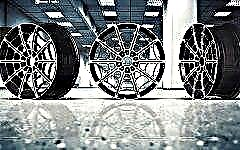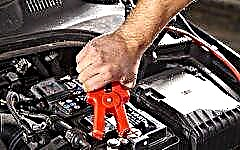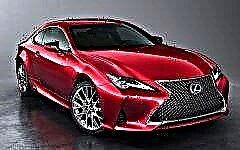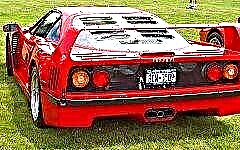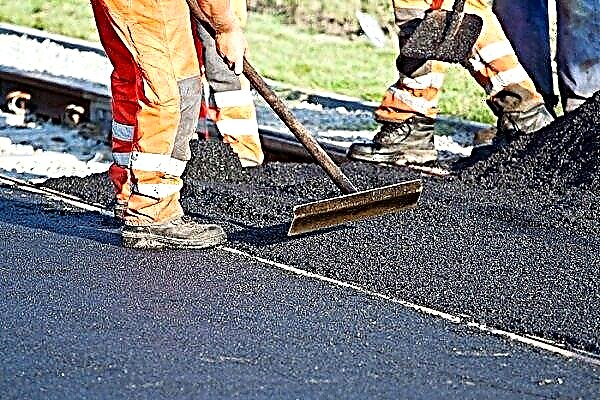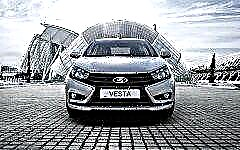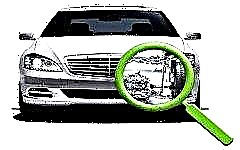

The content of the article:
- Genius or bummer
- Savior of the nation
- Sports career
- Bet on turbo engines
- Renault and Nissan
- Who owns Renault
- Renault in cinema
- History of the logo
- "French octopus"
Over the centuries of its existence, the Renault brand has become one of the largest, most significant and recognizable car manufacturers in the world. Unlike the self-motivated workaholics - the Japanese or the pedantic idealists of the Germans - this company was created by the spoiled, upbeat French life-star Louis Renault. What happened with this desperate young man, we will see in the next review.
1. Genius or lazy

Louis Renault is a vivid embodiment of the opinion that excellent students and "good guys" do not achieve fame and fortune. If the right people live by the rules written by someone, then geniuses and hooligans write their own and force others to follow them.
Louis was born into a very wealthy family and from childhood was surrounded by love, attention, care of servants and overprotective parents. Naturally, this made him a spoiled tomboy who did not want to study, but still the most beloved of the five children. But the boy was very fond of technology, which his father noticed and gave his son his shed for experiments.
Louis independently studied electricity, various designs, including the design of the engine. Already at the age of 11, being too lazy to get out of bed to turn on the light in the room, he made a galvanic battery. Now he just needed to pull the string so that the plates were immersed in the acid and gave electricity in return. The boy even ran away from home for a while, but not for hooliganism for the sake of hooliganism, but to take a ride on the locomotive and study the principle of its operation.
At the age of 21, Louis acquired a so-called "self-propelled carriage" and began to disassemble and modernize it, equipping it with the first cam transmission in the history of the automotive industry. When he raced through the streets of Paris on a bet on his unit, he received his first order for 12 similar models at once.
In 1899, together with his older brothers, he started his own business. and literally from the very first days, he began to produce hundreds of cars annually for an insane cost of 3 thousand francs at that time. Louis worked selflessly, not knowing rest: a drum brake, a hydraulic shock absorber, quick-release plugs, an air starter, a power system with a turbocharger - amazing inventions from a failing student who could not go to college.
2. Savior of the nation

Further more. Renault produces its first bus, then develops a taxi with the body of a Landaulet, which allowed, during the First World War, to quickly transfer reserve soldiers to the front and win the first victory over the invaders. He distinguished himself in aircraft design, having created 15 thousand engines for the army. And finally, the Renault-branded ambulance helped save hundreds of lives of wounded soldiers, and awarded its creator the title of savior of the nation.
During World War II, Louis refused to work for the Nazis, so his property was simply taken away. A terrible moral blow was dealt to the deteriorating health of the no longer young designer, when aviation bombed 80% of his factories.
After the liberation of occupied France, Renault himself went to the new government to discuss the future of his production. However, he was accused of treason and industrial assistance to the enemy, and therefore sent to prison, where he was severely beaten and died from the injuries he received.
Louis Renault lived a fantastic life - from a cloudless childhood to a brilliant youth and the greatest glory, endured the hardships of war and the loss of his relatives, loved, raised his son and died, humiliated and forgotten by everyone.
3. Sports career

After the success of the first self-made copy in 1898, Renault cars began to actively participate in races and win convincing victories. The Renault TYPE K, powered by a Louis-designed engine, showed itself in a race from Paris to Vienna in 1902. The impressive Renault 40CV set several records at once during the 1925 Monte Carlo Rally and emerged victorious.
After the Italian designer Amadeus Gordini joined the company in 1958, the motorsport division received a new round of development. The Renault 8 GORDINI has become a true legend, the most popular car and a symbol of success for several generations of pilots, the impetus for the Renault 8 GORDINI Cup in 1966.
The Renault Sport division was created in 1976 and is closely engaged in the construction of cars for Formula 2 and Sport Le Mans. Until 1983, the achievements of the French could not be called impressive: only one victory in Formula 1 and a silver in the Constructors' Cup. But since 1989 - 6 consecutive victories in the Constructors' Cup and profitable cooperation with the Benneton team.
The second round of fame came in the 2000s, when Fernando Alonso brought victory in the 2005 and 2006 World Championships. In addition, the team again won several constructors' trophies, and Sebastian Vettel entered the record book as the youngest 4-time world champion in Formula 1 history.
4. Bet on turbo engines

The manufacturer's team, even without its ideological mastermind, continues to generate innovative ideas, setting the tone for the automotive industry. For example, it was Renault who gave the world turbocharging by building a V6 engine with a turbocharger.
In 1978, Renault drivers won a 24-hour race with a similar engine, while competitors continued to use naturally aspirated ones. And already next year, the pilot of the team wins the first victory in Formula 1 at the French Grand Prix. As a result, the bet on turbocharged engines brought Renault as many as 15 Grand Prix in the 80s.
At the end of 2017 Renault presented a joint development with Daimler - a turbocharged 1.3-liter engine for 115, 140 and 160 "horses". It impresses with its reduced fuel consumption and harmful emissions, acceleration and high thrust at low speeds, plasma spraying of cylinders, and a special design of the combustion chamber.
The novelty is supposed to be installed on Renault Scenic, Grand Scenic, Mercedes-Benz A-Class, and, possibly, on the Russian Lada Vesta.
5. Renault and Nissan

Not all car owners of the popular Japanese brand know that since the 1990s, almost half of its shares have been owned by a French car designer.
Now the joint work of Renault-Nissan makes it possible to produce more than 8 million vehicles annually, placing the alliance on the 4th place among the world automakers. Over the years, companies have managed to maintain their uniqueness and independence with deep respect for each other, mutual assistance and exchange of experience, and at the same time survive the global economic crisis together.
In addition, manufacturers were able to make their models available to consumers through joint platforms and common units that reduce the cost of production.
Although some car owners point out a fundamental difference between the products of the company's co-creation, they believe that new cars like the Nissan Quashqai or Nissan Juke have become more clumsy and less technological. Therefore, true fans of the brand prefer to order cars from Japan, right-hand drive and Asian assemblies, and not French "substitutes".
6. Who owns Renault

After the imprisonment of the founding father of the company, Louis Renault, his factories were nationalized by the state without trial and compensation to the owners, which was the only such case in world history.
Attempts by the Renault family to sue back their property were unsuccessful. In 1996, the concern was privatized, and in 2010, as a result of legislative reform, wife and son Louis got the chance to re-file a lawsuit.
As a result, at the moment 8 Renault grandchildren are trying to get compensation from the state for the illegal nationalization of production. Only 15% of the company's shares remained in the hands of the state, whose pressure is weakening from year to year, another 15% belongs to Nissan, the rest is in the hands of shareholders.
7. Renault in Russia
Emperor Nicholas II had his own yacht and several trains, but was extremely skeptical about cars. Not only did he not move on them himself, but in Crimea he completely banned the use of this type of transport.
But once Russia was visited by the Grand Duke of Hesse, who made the Russian tsar ride with him. Nicholas II was so impressed by the simplicity and comfort of the car that he quickly set up his garage and filled it with dozens of different cars.
Of the 50 models, 5 had the Renault nameplate, and already in 1916 the Russian Renault joint-stock company appeared in our country, for the needs of which a plant was erected in Rybinsk.
The October Revolution destroyed the plans for the production of the French car industry in Russia, and the first official representation of Renault appeared only in the 60s of the twentieth century.
8. Renault in the cinema

The automaker, one might say, stands at the origins of cinema, because it was his car that was captured in one of the first films of the Lumière brothers in 1899. After the first successful experience, the directors gladly shoot Renault models in their films, sometimes even in the lead roles, as happened with the film "The Unexpected Prince". The emphasis in it, as the plot develops, clearly shifts from a love story to the unexpectedly inherited Renault ZOE electric car for the protagonist.
In addition to providing its vehicles for filming, Renault is a regular sponsor of film festivals, including Cannes, as well as the Academy of Motion Picture Arts. Over the centuries-old history of its existence, Renault cars have delivered several dozen movie stars of various levels of popularity to the red carpet.
9. History of the logo

The company logo has changed more than once, reflecting the strategy, philosophy and ideals of management at each specific moment of development. The automaker acquired the first logo in 1900, weaving the initials of its creators in an oval.
In 1906, the oval was replaced by a gear-shaped circle, inside which a sports car was placed. The outbreak of World War I was also reflected in the emblem, which now adorns the moving tank. By the way, none of these logos were used as a nameplate placed on the produced models.
The first sign that adorned Renault's face was a simple inscription of the same name in an oval symbolizing the radiator grille. The well-known rhombus first appeared only in 1925 and since then it has become more voluminous, now thinner, now it received the inscription "Renault", then it lost it, but in general it has remained unchanged to the present time.
10. "French octopus"

Renault's sphere of influence is so great that the corporation can fully be called an industrial octopus.
The company has been in the longest "relationship" with Nissan - more than 15 years, the next most stable partner is Mercedes, whose alliance also goes back a decade. The result of this partnership is the Smart series, a Mercedes crossover that has become a symbiosis of Renault and Nissan and a joint launch of Infiniti. Skeptics are already looking forward to the moment when Mercedes will completely turn into Renault.
In Russia, the French sphere of influence spread from AvtoVAZ, embodied in Largus and Xray - clones from acia MCV and Renault Sandero. Even an absolutely domestic Vesta has a lot of Renault parts and assemblies inside.
And finally, not so long ago, a controlling stake in Mitsubishi Motors was bought out by Renault, after which the Japanese electric car i-MiEV suddenly disappeared from the market, and Renault Twizy was released instead. Coincidence or Monopoly?
The role of the French automaker can hardly be overestimated in the context of the development of the automotive world. Some of his cars are recognized as bestsellers, the racing team is considered one of the best in the world, technical inventions have radically changed the production process. Renault brightly and reliably entered itself into the annals of automotive design, becoming one of the most reliable and certainly the most popular brand.
Renault

